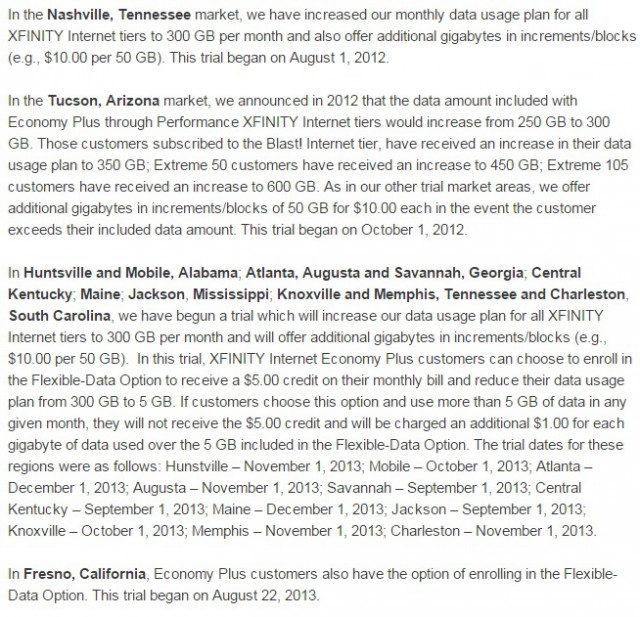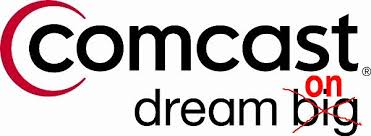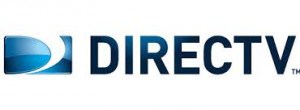
Phillip “It isn’t so dumb to own the pipes” Dampier
In 2006, AT&T CEO Ed Whitacre thought his company was at a disadvantage being stuck with “dumb pipes” while Google, Yahoo! (remember them?) and Vonage couldn’t count their earnings fast enough. While AT&T sold consumers plain DSL service, content was king on Wall Street and Whitacre groused it was unfair for bandwidth hogs to use “the pipes for free.” That one statement was the equivalent of throwing a lit match on a hillside in Malibu Canyon and a predictable firestorm over Net Neutrality ensued.
Nine years later, Net Neutrality is now official FCC policy, although the sour grape-eating Republicans will continue to throw Congressional hissyfits along the way. While they rely on tissue-thin evidence to back their assertion the FCC secretly colluded with the Obama Administration to stick it to AT&T and demand its repeal, the future of Net Neutrality will more likely be decided in a courtroom a year or two from now.
Back in 2006 AT&T primarily sold DSL service and was looking for cash to finance its then emerging U-verse platform. AT&T planned to follow cable’s lead, devoting most of the available bandwidth on its fiber to the neighborhood network to cable television programming. Broadband speeds were limited to just under 25Mbps — even less if a large household had multiple television sets in use.
But as the Great Recession arrived and wages stagnated, the cost of what used to be a “must-have” service for most Americans increasingly began to exceed the household budget and the day finally arrived when cable companies started losing more television customers than they were adding. Even worse, cable programming costs continue to spiral upwards and no major cable company can increase cable television rates fast enough to support the usual profit margin the industry counted on.
What Whitacre failed to realize nine years earlier is that broadband providers did not simply own “dumb pipes.” AT&T, Comcast, Verizon, Time Warner Cable, Charter and other providers actually occupy two gilded catbird seats, with AT&T and Verizon dominating the wireless Internet business and Comcast, Time Warner, and Charter dominating at-home viewing and wired broadband. Lawmakers who deregulated both industries predicted pitting AT&T against Comcast or Verizon against Time Warner Cable would create competition not seen since Coke vs. Pepsi. Consumers would benefit and world-class service would result.
Instead, Time Warner Cable now sells Verizon Wireless phone service. Verizon gave up on expanding its FiOS network and is selling off its DSL and FiOS business in pieces to focus on its best moneymaker, Verizon Wireless. Comcast in turn threw in the towel on any notion of offering competing cellular service and, in fact, sold its acquired wireless spectrum to Verizon.

PlayStation Vue’s lineup
The best way to make money is to avoid price wars with your competitors and the evidence shows there is growing peace in America’s Telecom Valley. Comcast can now raise your broadband bill because, for most, Verizon FiOS isn’t an option. AT&T U-verse does not have to hurry speed upgrades to customers if Time Warner Cable delivers no better than 50/5Mbps service in large parts of its service area. Google Fiber remains a minor threat, only available in a handful of cities. AT&T distributed more copies of its press release touting U-verse Gigapower — its gigabit Internet offering — than there are customers qualified to sign up.
Notice that we’ve drifted away from talking about cable television programming. So has the industry, now increasingly dependent on broadband rate increases to make up the difference in revenue they used to take home from their television packages.
But now that the biggest players have a predictable source of revenue, allowing disruptors to further challenge earnings isn’t something your local cable and phone company will allow for long. At the moment, those most likely to cause problems are the growing number of “over the top” streaming video services that do not require a cable television subscription to watch. But they do need broadband — Whitacre’s “dumb pipes” — to reach subscribers. To manage that, services like Apple, PlayStation Vue and Sling TV and their customers must deal with the gatekeepers — AT&T, Comcast, Time Warner Cable, Verizon and others.
What Whitacre thought was a disadvantage is now becoming the best thing in the world — manning a toll booth on the only two roads most Americans can use to access online content.
Today, Sony officially launched its Internet-TV service, “PlayStation Vue” in three cities (New York, Chicago and Philadelphia) with a base price of $49.99/month. In includes more than 50 cable networks and in the three launch cities — local network affiliates. In Chicago and Philadelphia, where Comcast provides cable service, potential customers will need to pay $50 a month for Vue and another $64.95 a month for 50Mbps broadband — the least expensive broadband-only tier that is suitable for high quality viewing. Your combined bill for both services is $114.94 a month. Comcast charges $99.99 a month for its double play – 220 TV channels and 50Mbps broadband — almost $15 a month less for its package, and it includes around 150 more channels than Vue.

Comcast explains its new usage caps.
But Comcast also has another weapon it is testing is several of its markets — the resumption of usage caps and overlimit fees on its broadband service. Comcast customers in most test markets are given 300GB a month, after which they face overlimit fees of $10 for each additional increment of 50GB. While web browsing and e-mail fit more than comfortably within those caps, watching HD video may not. That leaves a potential Vue customer with a major dilemma. Should they pay $15 a month more for service than they can pay Comcast for a better package -and- chew away their usage allowance using it?
Comcast has yet to figure out how to install a coin collector on top of your television set, so you can watch as much Comcast cable television as you’d like. But watching streaming video could get very expensive if it exceeds a future Comcast usage allowance.
Smaller video packages from providers like Sling TV or the forthcoming Apple streaming service might make more sense, but will still be subject to Comcast’s usage caps if/when they are reintroduced around the country, while Comcast’s own television service will not.
This is why cable and phone companies hold enormous power over their potential competitors, even if Net Neutrality is fiercely enforced. Usage caps and usage-based billing represent an end run around Net Neutrality and both are permitted. The FCC has consistently refused to engage on the issue of broadband usage caps, leaving providers with a useful weapon to deter customers from dropping their television package in favor of an online alternative.
With most Americans having a choice of only one or two “dumb pipes” over which they can reach these services, being an owner of those pipes and getting to set the rates and conditions to use them is a very comfortable (and profitable) place to be.


 Subscribe
Subscribe
 The banner usually disappears after the customer acknowledges receiving it. Stop the Cap! has learned the number directs callers to Rogers’ customer retention department where customers are pitched special discounts to change their mind. The prices are comparable, if not better, than new customer promotions found on Rogers’ website. Rogers is far less annoying than Comcast is when it faces losing a customer. If a customer rejects the offer (or never calls in to hear one), they are not bothered any longer and the representative thanks them for their time.
The banner usually disappears after the customer acknowledges receiving it. Stop the Cap! has learned the number directs callers to Rogers’ customer retention department where customers are pitched special discounts to change their mind. The prices are comparable, if not better, than new customer promotions found on Rogers’ website. Rogers is far less annoying than Comcast is when it faces losing a customer. If a customer rejects the offer (or never calls in to hear one), they are not bothered any longer and the representative thanks them for their time. This can knock your Rogers cable bill down to $46/month before GST and other taxes.
This can knock your Rogers cable bill down to $46/month before GST and other taxes. For the benefit of new visitors, text items in bold are clickable links. A complete video from this event will be posted as soon as possible.
For the benefit of new visitors, text items in bold are clickable links. A complete video from this event will be posted as soon as possible. That kind of reaction is unsurprising considering Consumer Reports
That kind of reaction is unsurprising considering Consumer Reports  The only suitable response to this merger deal is its outright rejection. Some may recommend imposing a handful of temporary conditions in return for approval – like the kind Sen. Al Franken accused Comcast of reneging on after its earlier merger with NBCUniversal. But this is one of those cases where you just can’t fit a round peg into a square deal for consumers, no matter how hard you try.
The only suitable response to this merger deal is its outright rejection. Some may recommend imposing a handful of temporary conditions in return for approval – like the kind Sen. Al Franken accused Comcast of reneging on after its earlier merger with NBCUniversal. But this is one of those cases where you just can’t fit a round peg into a square deal for consumers, no matter how hard you try. Comcast suggests this merger will make its cable television market share no larger than it had in 2002 when it bought the assets of AT&T Cable. But this is 2014 and cable television is increasingly no longer the industry’s biggest breadwinner. Broadband is, and post-merger
Comcast suggests this merger will make its cable television market share no larger than it had in 2002 when it bought the assets of AT&T Cable. But this is 2014 and cable television is increasingly no longer the industry’s biggest breadwinner. Broadband is, and post-merger  Time Warner’s new top of the line Internet service, Ultimate 300 (formerly Ultimate 50), delivers 300 megabit service for
Time Warner’s new top of the line Internet service, Ultimate 300 (formerly Ultimate 50), delivers 300 megabit service for  Comcast doesn’t give customers a choice. In 2008, a strict
Comcast doesn’t give customers a choice. In 2008, a strict  The deal, finalized on Sunday, pays $95 per DirecTV share in a combination of stock and cash, about a 10% premium over DirecTV’s closing price on Friday. Including debt, the acquisition is AT&T’s third-largest deal on record, behind the purchase of BellSouth for $83 billion in 2006 and the deal for Ameritech Corp., which closed in 1999, according to data compiled by Bloomberg.
The deal, finalized on Sunday, pays $95 per DirecTV share in a combination of stock and cash, about a 10% premium over DirecTV’s closing price on Friday. Including debt, the acquisition is AT&T’s third-largest deal on record, behind the purchase of BellSouth for $83 billion in 2006 and the deal for Ameritech Corp., which closed in 1999, according to data compiled by Bloomberg. The deal would combine AT&T’s wireless, U-verse, and broadband networks with DirecTV’s television service, creating bundling opportunities for some satellite customers. As broadband becomes the most important component of a package including phone, television, and Internet access, not being able to offer broadband has left satellite TV companies at a competitive disadvantage. AT&T’s U-verse platform – a fiber to the neighborhood network – has given AT&T customers an incremental broadband speed upgrade, but not one that can necessarily compete against fiber to the home or cable broadband.
The deal would combine AT&T’s wireless, U-verse, and broadband networks with DirecTV’s television service, creating bundling opportunities for some satellite customers. As broadband becomes the most important component of a package including phone, television, and Internet access, not being able to offer broadband has left satellite TV companies at a competitive disadvantage. AT&T’s U-verse platform – a fiber to the neighborhood network – has given AT&T customers an incremental broadband speed upgrade, but not one that can necessarily compete against fiber to the home or cable broadband.

 AT&T has approached DirecTV about a possible acquisition of the satellite provider in a deal expected to fetch at least $40 billion, spare change for AT&T’s $185 billion operation.
AT&T has approached DirecTV about a possible acquisition of the satellite provider in a deal expected to fetch at least $40 billion, spare change for AT&T’s $185 billion operation. DirecTV’s growth has fallen every year since 2010 and starting in 2013, the company began losing more subscribers than it signed up.
DirecTV’s growth has fallen every year since 2010 and starting in 2013, the company began losing more subscribers than it signed up.